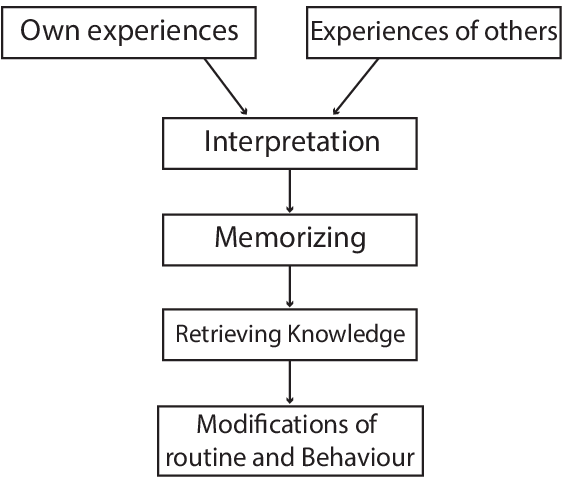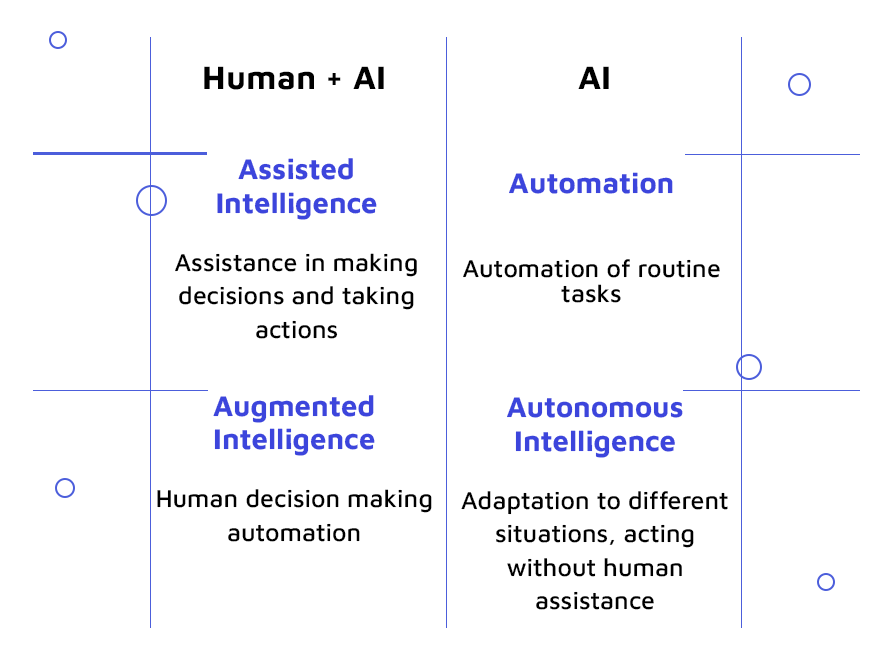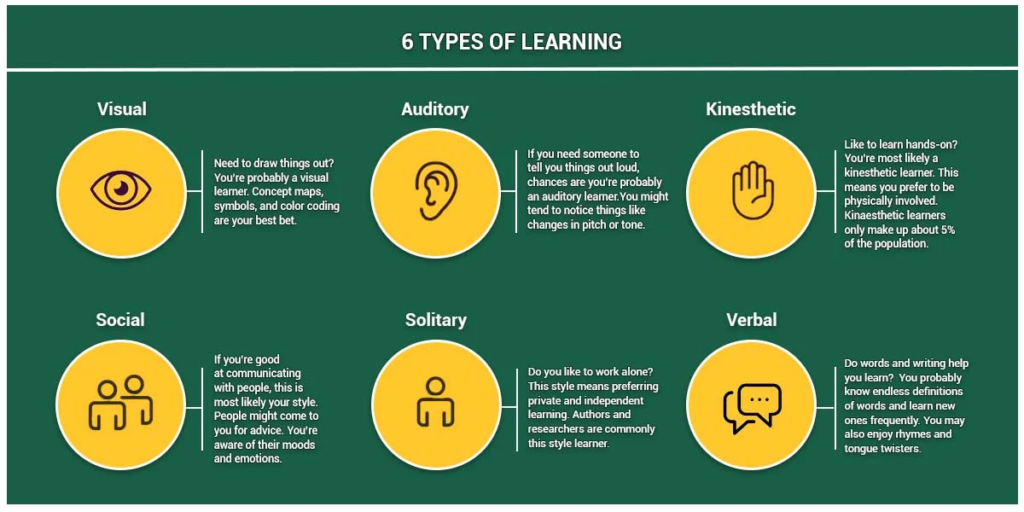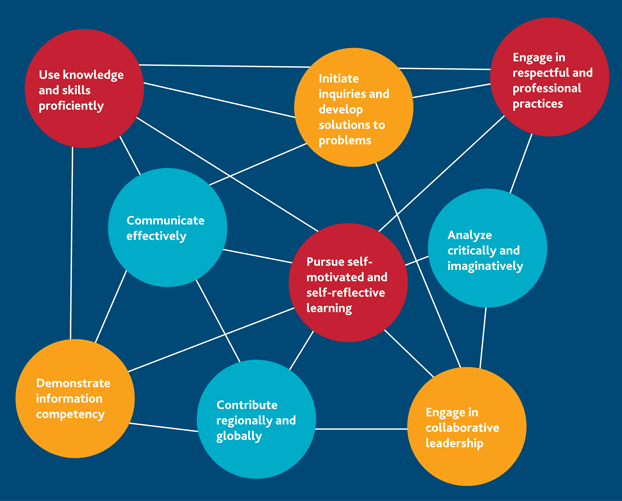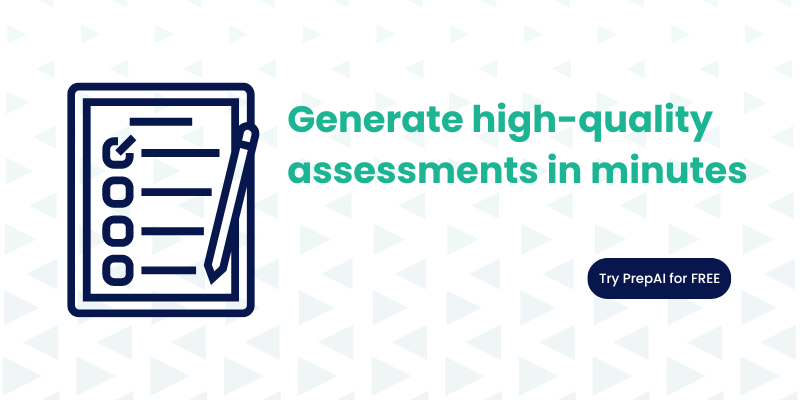AI can support teachers, but it can’t replace the human connection, care, and understanding they bring. The future lies in teachers and AI working together—not one replacing the other.
A recent feature on Forbes talked about how artificial intelligence or AI can never replace humans by outlining the fact that it is a technology that is here to make you more valuable. While there have been consistent debates in the online fraternity regarding the extent to which AI can disrupt the employment world as we know it, the results point in the same direction.
There are still decades to be covered, as far as the complete takeover of basic human jobs is considered. This is because humans are strides ahead of AI and ML when it comes to emotional perceptions, and understanding of different figures of speech, such as sarcasm, humor, sadness, etc., even with the immense research in generative and sentient AI.
Though AI and ML-powered robots can understand the overall tone of speech, they lack the empathy and distinctly human touch when it comes to relationships, and impeccable grasp over the emotions and sentiments.
This is one crucial basis that makes it impossible for AI to replace humans as teachers!
Here, we explore the subject matter at length and discuss various characteristics that make humans better than AI when it comes to teaching.
Let us begin by exploring the essence of teaching.
Humans as Teachers: The Entire Essence
Teaching is a one-on-one and many-to-one relationship that works in many unique ways. Not only does a teacher impart worldly knowledge to the students, but they also learn from them. Teachers and students form a symbiotic and synergistic ecosystem that helps in the mutual enhancement of knowledge (various flavors).
Further, what makes humanized teaching so special, is the fact that teaching happens outside the classrooms as well. It happens throughout life, and that too in various forms, such as visual learning, learning by listening, by doing things, life experiences, etc. Also, learning varies from one person to another depending on their perceptions, abilities, and preferences.
Take a look at the various sources of humanized learning in the following image:
This is why humanized learning differs from controlled, or uncontrolled learning models in ML and AI systems because learning in humans is unique for every single individual.
Humans as teachers have three distinct characteristics that add to the entire essence of teaching, and we discuss them below.
1. Teaching Is About Relationships
An AI might be able to replicate some aspects of a teacher-student relationship. Still, it will never fully replicate the warmth, empathy, and connection that comes from real human interaction. Though generative AI can converse much like a human, it can still miss the nuances of human emotion. For example, a teacher can notice disinterest or confusion in a student’s expression and slightly adjust their lesson to include the student in the learning process. Or, the teacher can talk to the student after class to find out the reason and help the kid. These interactions can build a deeper bond which cannot be possible if AI replaces teachers.
2. Teachers Are Constantly Evolving
They are always learning new things and experimenting with new methods in the classroom. No machine could ever duplicate the nimbleness and creativity of a good teacher. While the education industry has been traditional for a long time, it is actively adopting new technologies and evolving. Even without technology, good teachers have stood apart from the rest for their adaptability and ability to constantly learn and update their knowledge. AI tools can be trained on new data, but they will remain one step behind human teachers.
3. Teaching Is About Human Connection
One of the most powerful aspects of teaching is the relationship between teacher and student. This connection is what helps students learn, grow, and feel supported in their education. An AI can never replace that.
Imagine a student sitting alone in a classroom or a playground. A teacher who sees this is likely to talk to the student to ensure their well-being and escalate the matter if necessary. Ask a child about their favorite teacher and they are sure to name the person who makes them feel understood and safe. This inherent human bond cannot be replicated by AI.
But, there’s still a question one might ask – can robots replace teachers?
Robots can replace teachers at some point in the future when they are capable of it. However, a better question would be should robots replace teachers? Ideally, no. That’s because a machine, no matter how advanced and sentient it is, is still a machine that runs on a trained algorithm. AI and the future of education will be in safe hands when teachers use technology to streamline their work and reduce pressure instead of replacing themselves with robots and machines.
Now that we have established the premise, let us move on to discuss the pointers to support it and help you understand why AI can never replace human teachers.
Artificial Intelligence vs Human Teachers: Can AI Replace Teachers?
Through this blog, we aim to help understand the role of teachers, and how an AI could potentially assist them in their teaching. We also hope to answer any questions or concerns readers might have about AI and its impact on education.
The fear that artificial intelligence will one day replace teachers is understandable but unfounded. There are several reasons why AI will never be able to completely replace a human teacher.
Below, we share an image that shows the various characteristics of human plus AI and AI-based teaching:
We also hope that you will also agree on how AI could play an important part in revolutionizing today’s teaching methods.
1. Teachers Play a Vital Role in the Education
Teachers help students realize their uniqueness, which helps to encourage creativity and develop problem-solving skills. They help foster a love of learning and provide support and guidance as students grow and develop. They are also responsible for preparing students to enter the future workforce or pursue further education based on their interests.
On the other hand, AI has already started to play a role in the education sector by helping to personalize learning for each student. It can also provide students with objective and responsive feedback on their work, which helps them to improve their learning skills.
However, an AI has its limitations in interpreting and responding to the non-verbal cues that teachers often use in the classroom. There are other essential aspects of teaching that AI will never be able to replicate. Teachers also provide valuable life skills lessons, such as dealing with disappointment or failure.
Teachers are constantly evolving, learning new things, and experimenting with new methods in the classroom. An AI might be used to assist in teacher development by giving feedback based on previously fed criteria and proposing new teaching methods. In fact, artificial intelligence can help manage various teaching and administrative tasks a teacher has to perform as a part of the job.
For example, educators don’t have to plan the curriculum from scratch. Thanks to AI tools and other online resources, they can use existing material and customize it to align with the school’s mission and vision. They can compare and analyze the pros and cons of the subjects/ topics chosen, the extracurricular activities included, etc. Similarly, teachers can use generative AI and other AI tools to create monthly/ weekly/ daily lesson plans. Since the content is already available, they just have to cross-check for authenticity and customize it for different learning abilities.
Teachers can automate attendance-taking, quiz generation, etc., and spend more time encouraging meaningful discussions and collaborations between students. They can use translation apps to interact with students from diverse backgrounds. In short, the activities teachers perform every day can be simplified with AI, thus enabling them to be better role models for students.
2. Institutional Learning Is a Mutually Supportive Ecosystem
When we talk about teaching, we must understand and accept one fact – teaching is not a one-person job. As mentioned earlier, teaching and learning come in various forms, from various people, and in various flavors.
When students go to a school, they learn and perceive from the actions of others as well – their peers, teachers (that might not even teach their class), the staff members, and the overall educational infrastructure an institution offers.
Such institutional settings are not only important but crucial for the holistic learning of students, as they lead to value-added education, as shown below:
Let us try to understand this with the help of an example.
Kyle is a pre-schooler who is home-schooled with state-of-the-art AI teaching solutions. He has access to some of the most awesome educational materials and is going well. Seeing his performance in various online tests and assessments, his parents think about continuing homeschooling without the aid of a teacher.
Now, after 3 or 4 years, they think it’s time for him to learn in the real-life education system. Kyle goes to the school and witnesses a whole new world out there. There are many things to remember, such as names of his peers, teachers, departments, routes to different sections of his school, rules, etc.
Now, his learning is not only about the books, numbers, or rules of grammar. He is learning sports, teamwork, respecting the space, privacy, and opinions of other people around him. He is now realizing that learning and education are so much more than simply completing sheets after sheets of work and interactive activities.
This is just a small glimpse of how institutional learning can contribute to the wiring of our brains and
As AI alone cannot equip the students with such a comprehensive and holistic ecosystem on its own, it can never completely replace humanized teaching.
3. AI Cannot Provide the Holistic Emotional Connect
This connection is what helps students learn, grow, and feel supported in their education. AI can never replace the emotional support that teachers provide. Teachers are lifelong learners who continue to learn and grow throughout their careers. They are constantly adapting to new situations and the needs of their students.
AI can’t provide the same level of support that teachers can. In addition, teachers are passionate about education and helping students learn. They don’t just see it as a job — they see it as a calling; they see it as their purpose. And that’s something that AI will never be able to understand.
Teachers understand that to transfer the knowledge they want to impart to students, they must create a conducive environment for limitless learning.
4. Teachers Can Adapt and Change Their Teaching Methods
Teachers can adapt and change their teaching methods to meet the needs of an individual student. They understand that one student is different from another. One understands a subject better than the other and has its own ways of absorbing knowledge.
Teachers can provide a personalized learning experience depending on each student’s capacity and find a way for them to excel in a subject. Teachers are also able to connect with their students on a personal level, which helps them learn and blossom.
Teachers provide essential life skills to their students, such as working collaboratively and thinking critically. They help to instill values in their students and prepare them for the future.
While we have been discussing the things AI cannot impart as a teacher, let us move on to find how technology can help students and teachers enjoy an enhanced learning experience.
How Can AI Help Teachers
Instead of planning to use AI to replace teachers, advanced technology can help and support teachers in various ways. Here are a few ways AI helps teachers:
Personalized Learning
Artificial intelligence algorithms are good at identifying patterns. AI can be used to personalize the learning content for students according to their pace, strengths, weaknesses, preferences, etc. The sequence of lessons can be adjusted as per each student’s abilities. Additionally, students can repeat the lessons as many times as required and access the content in various forms. For example, text can be converted to speech. Teachers can record video lessons and upload the files to LMS, allowing students to study whenever it’s convenient for them.
Automating Repetitive Tasks
Teachers perform many repetitive tasks like marking daily attendance, sharing notes, creating test papers, conducting quizzes, correcting answer sheets, etc. While all activities cannot be automated, many of these can be handled using AI tools. For example, the LMS will maintain a record of students attending the online classes that day. AI question generators can be used to create any number of tests at any time. The exams can be conducted online and the same tool can share instant results with students. AI tools can generate lessons for most topics by gathering data from multiple sources. All these save time and energy for teachers.
Virtual Realities
AI cannot replace teachers because it cannot understand real-world situations like humans do. However, it can adapt to situations in real-time and assist teachers in managing classrooms/ lessons effectively. AR and VR technologies can be used to stimulate virtual-real environments in classrooms where students can experience real situations in virtual and safe environments. For example, teachers can take students on a virtual tour without stepping out of the classrooms, thus providing them with an enriched learning experience irrespective of the location, travel restrictions, etc. Data Analytics for Tailored Insights
Inclusivity and Differentiation
Teachers can use AI and NLP (natural language processing) tools to convert traditional classroom settings into blended/ hybrid learning environments. Students from different backgrounds and marginal communities can study together in the same class and become a part of mainstream education. Expecting a teacher to learn new languages quickly is realistic. However, teachers can use translator apps to converse with students from other backgrounds. Similarly, students can rely on the same apps to understand the lessons and make notes. Students with disabilities can be provided with the lessons in formats that suit their strengths. For example, students with visual impairment can listen to the lessons and use text-to-speech technology to convert visual content into audio.
Artificial Intelligence – An Enabler That Augments Teaching and Learning
While AI can’t provide a holistic learning experience, teachers can definitely enhance the quality of education with its functionalities. For example, an AI-based educational software can help identify areas where a student is struggling and needs help. These solutions can answer a teachers’ doubts when it comes to choosing the most effective teaching plans or strategies.
Currently, AI is finding application in multiple other areas of education, such as evaluation, teaching with different approaches, testing, personalized learning, virtual learning, etc.
One such example is PrepAI, which helps teachers in generating fair, bias-free, and unique questions in various formats and from multiple sources. The software helps teachers create MCQs, fill-ups, descriptive questions, and true/false questions of easy, medium and hard difficulty, in an effortless manner.
Such smart and powerful solutions can definitely help both teachers and students in identifying and filling the gaps in learning. While AI can’t fully replace teachers, it may be the catalyst for a new era in which both teachers and machines collaborate to create a beneficial learning environment that benefits students in every way.
So, would AI replace teachers – NO. But it will definitely disrupt the education and learning sectors and would emerge as one of the best enablers for augmented learning and teaching.

 Test Conducting feature is now live. You can now conduct tests from your generated question papers.
Test Conducting feature is now live. You can now conduct tests from your generated question papers.



